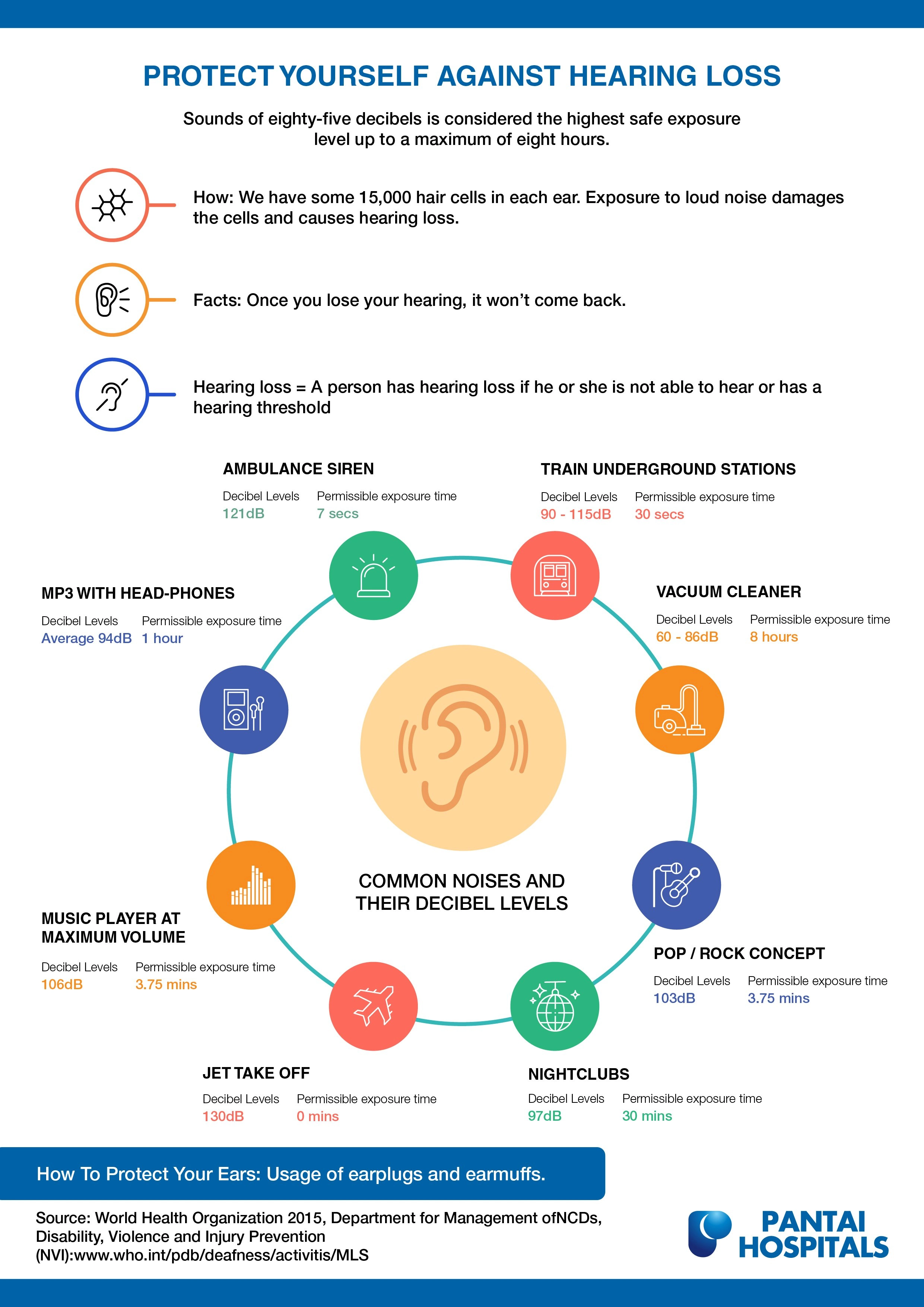
Sinusitis is an inflammation of the lining of the nasal sinuses. It is a common condition typically caused by a viral infection and improves within a few weeks. The sinuses are small, air-filled cavities behind the forehead and cheekbones.
The mucus generated by your sinuses generally drains into your nose via small channels. In sinusitis, the sinus linings are inflamed and cause the channels to become blocked.
Symptoms of sinusitis include:
Hearing loss is one of the most common conditions that otolaryngologists diagnose and treat.
This condition often develops with age as a natural result of ageing. Other causes include chronic ear infections, trauma to the ear or head, extended exposure to loud noise, and even certain ototoxic medications.
Signs of hearing loss include:
Vertigo is a sensation that you or the environment around you is spinning or moving. It can cause a person to feel lightheaded and unbalanced.
Common causes of vertigo include disorders of parts of the ear and brain that regulate balance. Other causes include benign paroxysmal positional vertigo (BPPV), head injury, inner ear infection and Ménière's disease.
Symptoms include:
Obstructive sleep apnoea (OSA) is a common condition that interrupts normal breathing during sleep due to a relaxed and narrowed airway.
Common symptoms include:
This is an infection of the middle ear characterised by inflammation (swelling and redness) and the accumulation of fluid behind the eardrum due to an infection such as cold.
Symptoms include:
It is the inflammation of the inside of the nose caused by allergens such as pollen, mould, dust, or skin flakes from certain animals.
Symptoms of allergic rhinitis include:
This happens when the nasal passages are blocked, causing difficulty in breathing through the nose. It may be due to various conditions like cold, infection of the sinus, allergic and non-allergic rhinitis, swollen turbinates, nasal polyps, nasal cysts, or tumours and deviated nasal septum.
Nose bleeds occur due to a broken blood vessel in the nose. These are often not serious and can be treated at home. It can be heavy or light and last for a few seconds to minutes.
The inflammation of the tonsils is called tonsillitis. It is usually caused by viral or bacterial infection.
Symptoms include:
Screening tests are used to detect and diagnose various conditions and diseases. The goal is to identify them early for more effective treatment options.
Types of ENT screenings include:
A hearing screening is a brief test to determine how well you hear different sounds.
Newborn babies also typically undergo a hearing screening prior to discharge.
Screenings for head and neck cancer involve a physical examination of the nose, mouth, and throat to look for abnormalities.
Prompt diagnosis is vital for appropriate and accurate treatment. Many factors can cause ENT symptoms. Therefore, it is important to consult a trained specialist.
Diagnosis is made based on various investigations. Your doctor will first evaluate your medical history and symptoms before conducting a physical examination.
Tests that may be requested:
The treatment options differ according to the types of ENT conditions. Your individual treatment plan will depend on various factors such as medical history, current health, risk factors, age, and severity of the condition.
The primary treatment for sinusitis is symptom relief. The following are some of the treatment options for sinusitis:
If your symptoms worsen, your doctor may start you on antibiotic treatment. The commonly prescribed antibiotic is amoxicillin. In some instances, if a patient is not responding to medications, surgery may be recommended.
The treatment depends on the cause and severity of hearing loss.
How to protect yourself against hearing loss

Vertigo treatment depends on the cause and severity of the symptoms.
During an attack of vertigo, lying still in a dark, quiet area may relieve nausea and lessen the spinning sensation. You may also be prescribed medicine.
You should also avoid stressful situations, as anxiety can exacerbate vertigo symptoms.
Treatment for Obstructive Sleep Apnoea (OSA) includes:
Most middle ear infections (otitis media) resolve within three to five days without specific treatment.
Analgesics can be used to relieve pain. Antibiotics are not routinely used to treat otitis media. However, those with chronic infection may require short courses of antibiotics.
It may be impossible to entirely avoid allergens; however, you can take measures to minimise exposure to a specific allergen that you suspect is triggering your allergic rhinitis. As a result, your symptoms will improve.
For mild conditions, over-the-counter medications such as non-sedating antihistamines would help and routinely rinsing your nasal passages with a saltwater solution to remove irritants.
Speak to your doctor if none of the methods above help alleviate your symptoms, as you may require stronger medication such as a corticosteroid nasal spray.
After the doctor has identified the source of nasal obstruction, treatment includes washing with nasal rinses, medications and sometimes, surgery.
Nose bleeds are often not serious and can be treated at home. To stop a nosebleed at home:
If bleeding still persists, then further treatment is required at the hospital.
Treatment options for tonsilitis include at-home care and rest, saltwater gargles, analgesics, antibiotics, and in some cases, surgery.
The caring team of healthcare professionals are available for consultation and to provide the best care. Get in touch with us to book an appointment today. We assure you the best possible care tailored to your specific needs.


